
“In 2013, Keita Suzuki came to my garage [Fujii Engineering] to join my racing team. I knew he was a quick driver around small circuits, but he wanted to try his driving skills at a higher competition level. He was always quiet and kept to himself, but when he would talk, it was only to utter these words: Please let me drive your racing cars.”
Mitsuru Fujii, the owner of Fujii Engineering, continued to explain how Keita became particularly interested in building cars while working at the garage, which led to him working on a special project in his free time after work and on the weekends. That special project is this very cool Toyota MR-S.


Having previous experience with the MR-S and even sitting his drivers license test in one, it’s little wonder Keita chose this Toyota model as a base for his build. The lightweight, mid-engine layout of the MR-S made it the perfect car in Keita’s eyes, one that both challenged and rewarded him as a driver.


So what did Keita do over the course of 12 months to extract the maximum potential from this chassis? A lot…
He started off by stripping the car down to a completely bare shell and undertook repair work where necessary. Then he improved rigidity and safety by strengthening the chassis with braces and a roll cage.

Next came the suspension, Spirit Racing shocks and aftermarket springs – 6kg in the front and 10kg in the rear – to provide the optimum balance of stiffness and compliance.
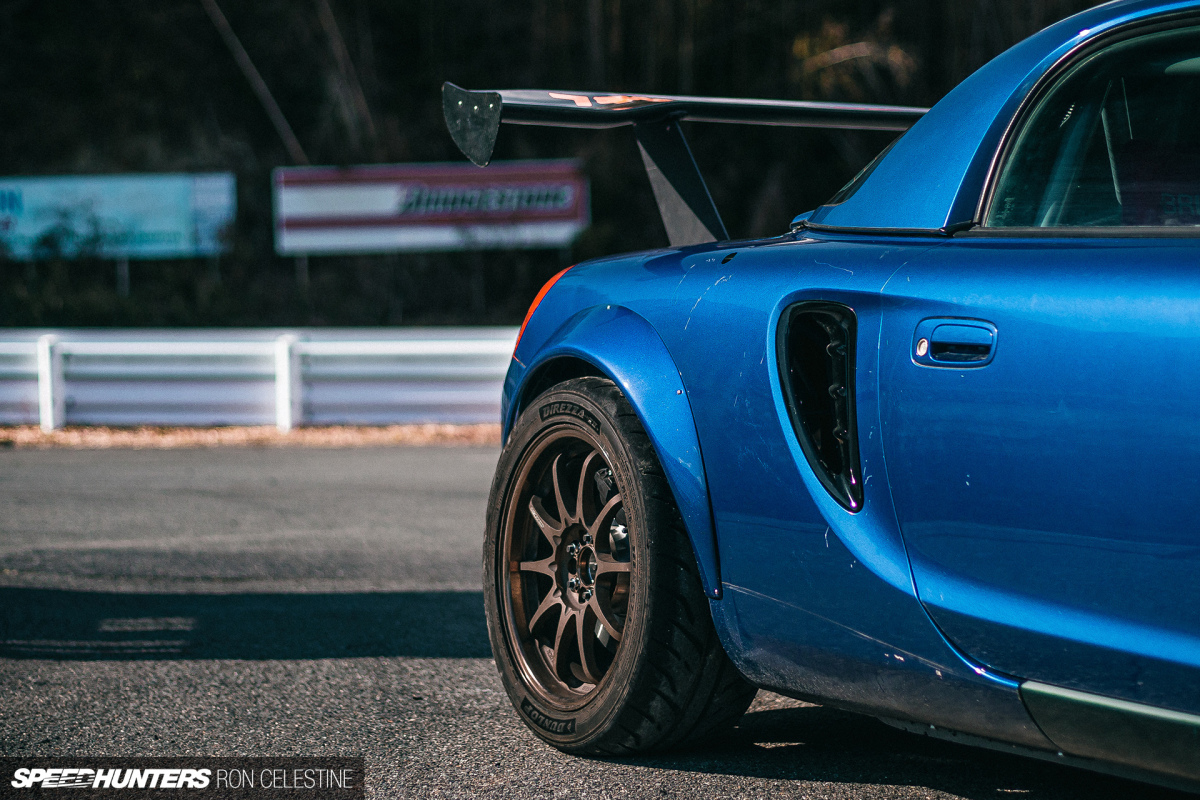

Notable changes to the exterior include a full set of overfenders that now contain lightweight RAYS Volk Racing CE28N forged monoblock wheels with a staggered 16×8-inch front and 17×9.5-inch rear fitment. There’s also a carbon GT wing and carbon air scoop, both of which Keita made with the help of Fujii-san.


Inside is typical race car luxury with most of the original interior stripped out to save as much weight as possible. A carbon-Kevlar Bride seat for Keita and a few gauges to relay vital information is about the extent of it now.
A custom carbon fiber rear firewall was also added, and here’s why…

The MR-S’s original 1.8L 1ZZ-FE inline-four engine was good for around 140hp from factory, and that combined with the car’s sub-1,000kg weight provided pretty decent performance. But Keita knew that if he and his MR-S were going to be a real threat on the track, more power was never going to hurt – especially for the bigger tracks like Suzuka Circuit.
If you needed a hint at what now resides in the engine bay, this STI GeNome boost gauge is it.

Yes, there’s an EJ20T from a Subaru WRX STI out back, and with almost double the output of the 1ZZ, it’s turned this little Toyota into a proper track weapon. It’s not just the power though; the EJ’s boxer design sets the engine weight low, allowing Keita to keep the balance as neutral as possible.
You have to love the custom exhaust that exits directly out the center of the rear bumper.

To keep things simple, Keita also swapped out the Toyota transmission for a Subaru FWD unit. To suit his driving style, he then swapped in the gear ratios from an AWD Subaru gearbox.

It’s one thing to talk about this MR-S and show you photos of it shooting flames around Motorland Suzuka Circuit, but it’s another to have onboard footage of Keita attacking the main Suzuka track. You can check it out above.


This is one of those projects that will likely never be finished, as Keita is always tweaking things to improve the car. He says he has no desire to become a pro driver, but still wants to develop his skills both as a driver and builder.
I just want to know if Keita will let me take his MR-S for a few laps around Suzuka next time!
Ron Celestine
Instagram: celestinephotography





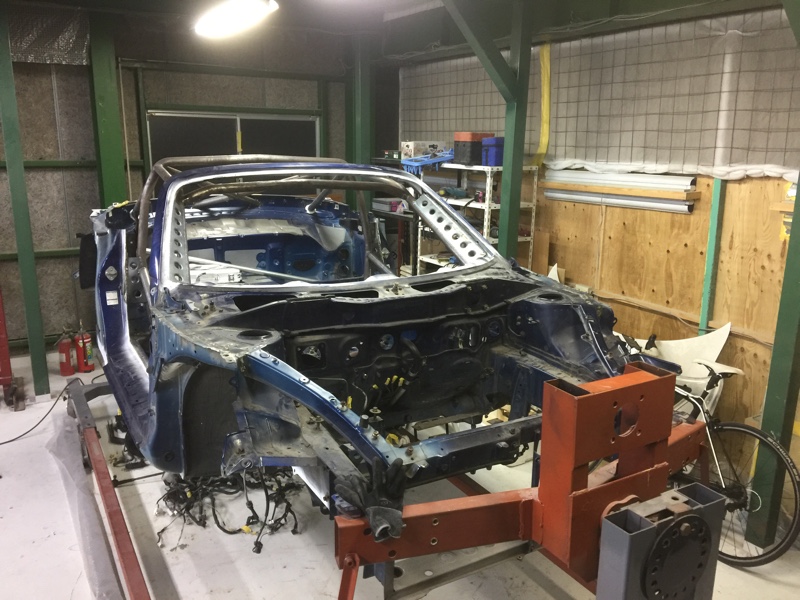

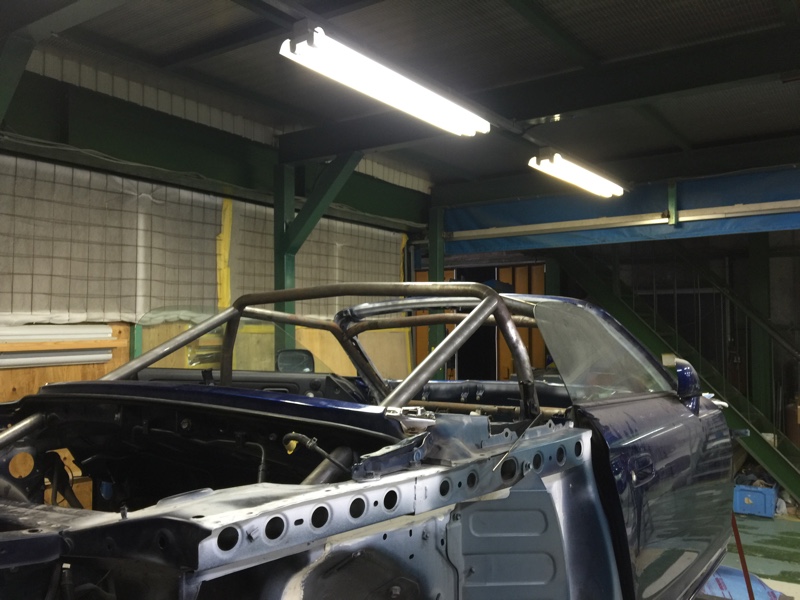
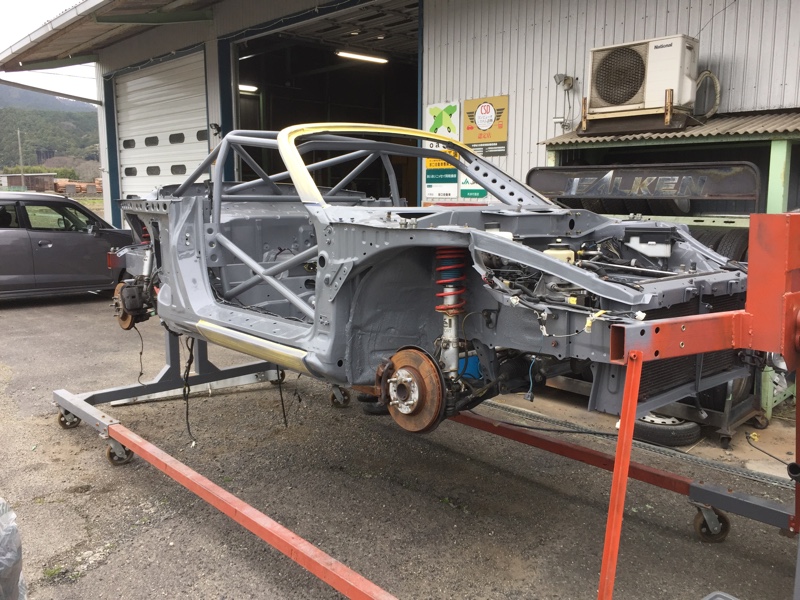


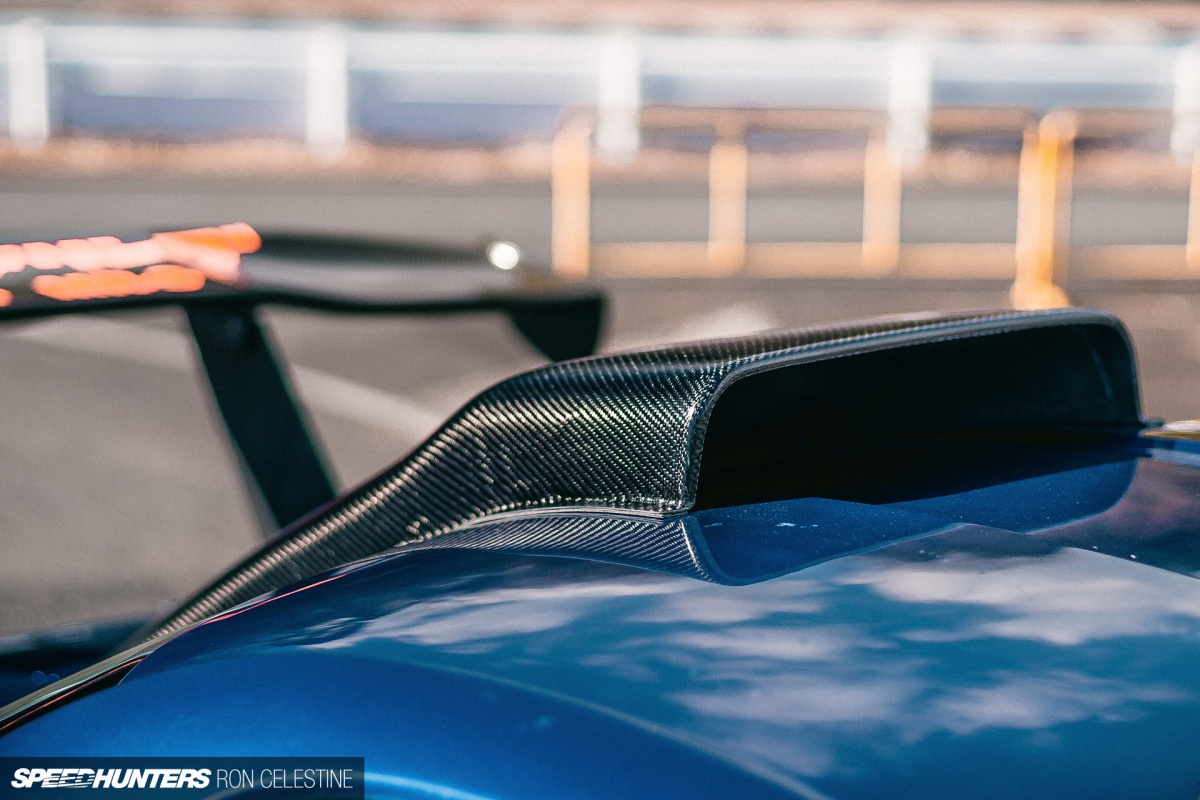



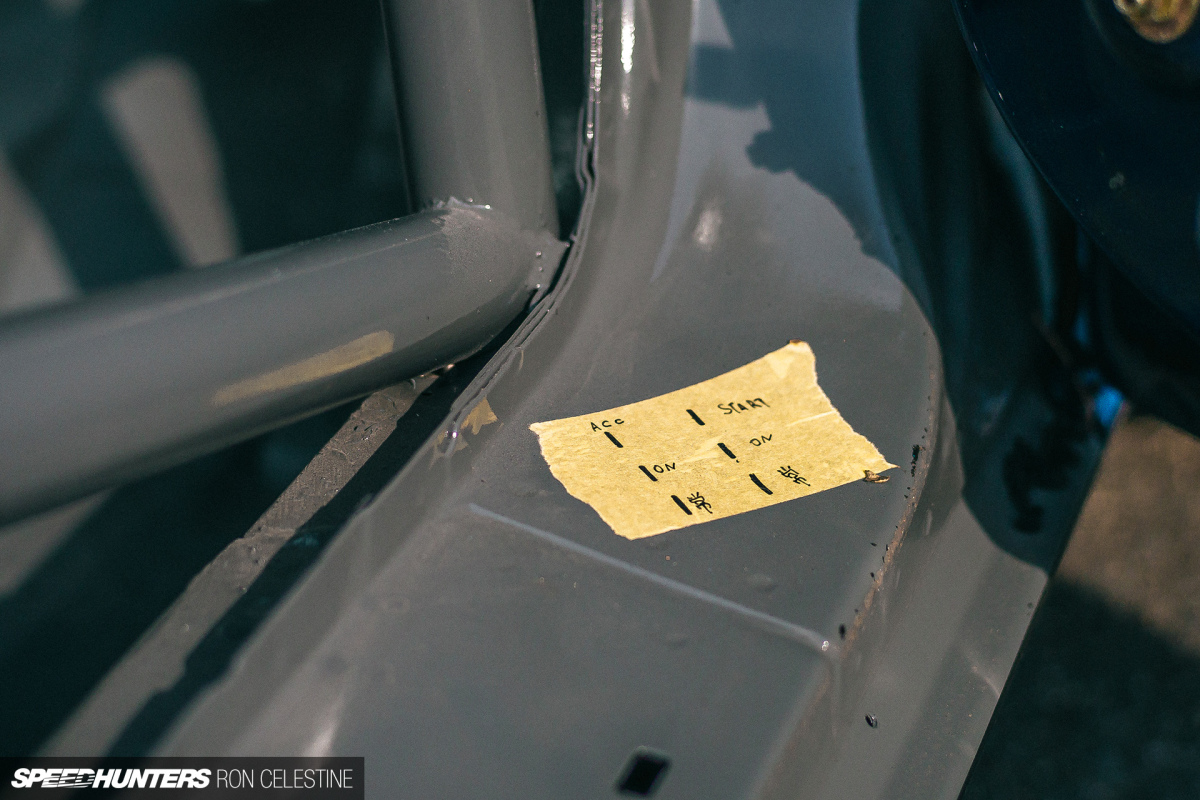

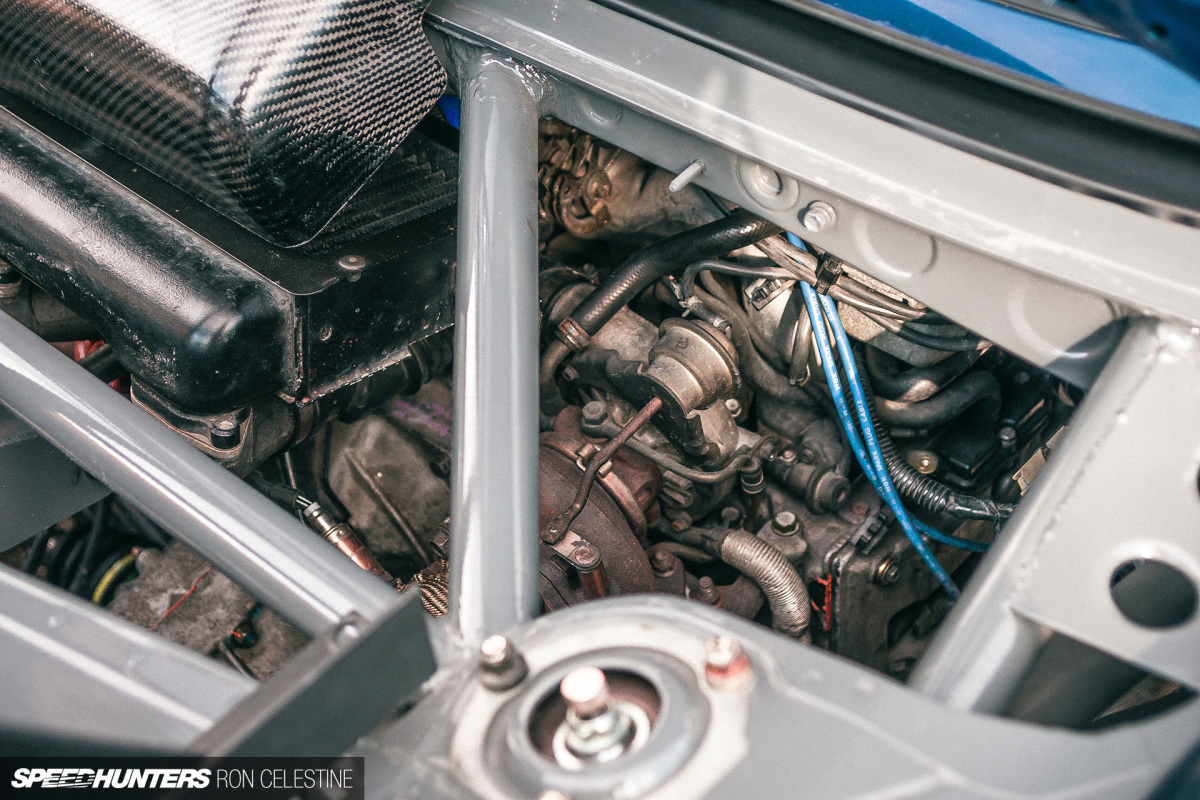
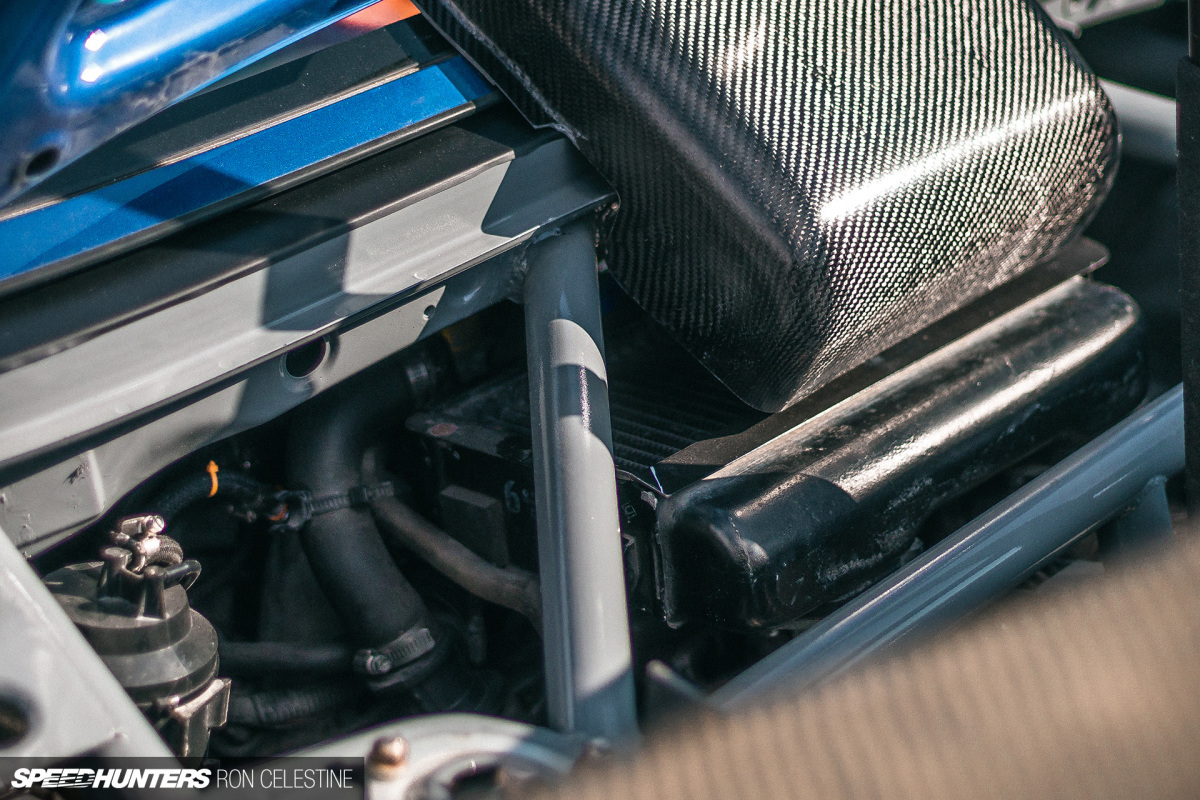
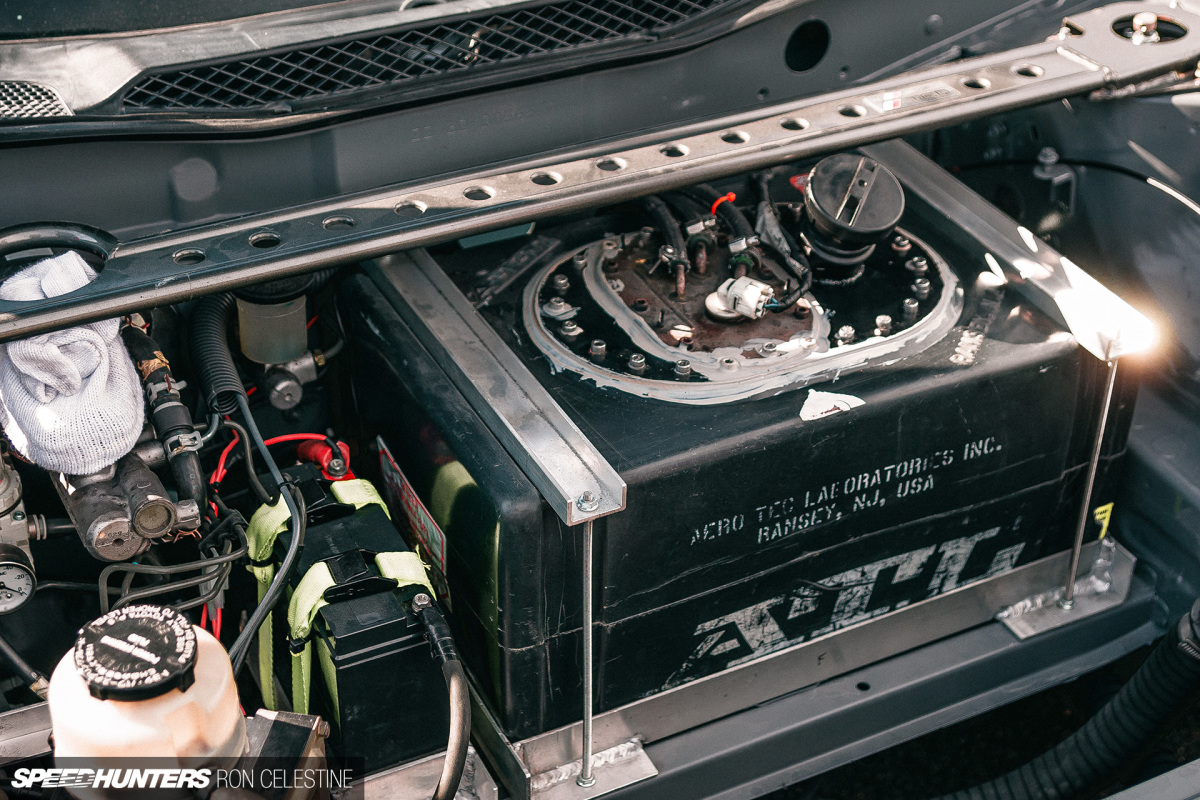








Haulin ass! Amazing build and idea, kudos to the team and driver!
"the EJ’s boxer design sets the engine weight low, allowing Keita to keep the balance as neutral as possible."
i always see this written, especially in the case of defending the lethargic power plant in the frs/86/brz, but realistically we can all name track weapons new and old that do NOT feature a boxer powerplant, that we would describe as significantly more balanced than anything subaru has the capability of engineering.
My question is, how much of a benefit are these designs (boxer engines) over traditional? Are the balance gains worth it in comparison to the obvious power and reliability drawbacks?
case in point: you see 4g63 evo(s) wipe the floor with anything boxer related on the dragstrip, in time attack the gap narrows but only because of usable power in these chassis. Still when taken into consideration the rest of the field is running traditional non horizontal engines, the drawbacks at least from my perspective seem to outweight the benefits.
tangent aside, i'm glad to see people still into this chassis. super underrated and totally capable.
I think one of the major reasons that you don't see flat motors in some motor sport categories could be the engine layout rather than its potential to produce power and be reliable. A motorsport engine has a lot more development than a road going motor so engineers can manage that, it just depends on the budget and the will to succeed by a manufacturer or private race team. In motorsport, serviceability is a large part of success. A flat engine is in my opinion, more difficult to service and that would be why I would not choose one. Not because it is a bad engine or cannot make the power I would want. Since the car in the article is not actually a car used in pro level competition, serviceability doesn't matter and the low inertia and balance makes sense. You make a fair point, however I could argue that many 4g63 motors suffer from crankwalk issues and I wouldn't touch one. I think the EJ platform and the 4g platforms are different sides of the same coin from a use perspective. Which issues do you want to deal with? Each motor can make power if you have the budget to address all of the problems but which problems do you want to manage. Seems as though many people would rather manage those with a traditional non horizontal engine. Also keep in mind, many manufacturers make non horizontal engines which are cheap in comparison(cough honda k series cough). In my opinion, Evo's were mainly used for the AWD system which was much better than Subaru's for the same period. That coupled with the ability to service the motor easily. (spark plugs anyone?). This is why I believe they were used, not because the motor wasn't as capable.
There is much more to it than the engine layout. Subarus have their engines in front of the front axle and the awd system is quite old school. Anyway a car is a sum of compromises. In highest level of circuit racing aerodynamics dominate, so the engine layout is mostly dictated by tight packaging. In the case of this MR-S the Subaru drivetrain is an excellent choice from dynamic and packaging point of view and i quess they are easy to source in Japan.
It's funny, as a Subaru owner I constantly hear people talking about how unreliable they are for X or Y reason, yet the EJ20's (2L engines) are fine, they're just as reliable as anything else, if not more so. The common problems they have, ring land, spun bearings, pinging, leaning out, timing belts, are almost always user error or lack of service. I have a 99 WRX approaching 300K Kms on it's stock engine, and I've been thrashing the absolute shit out of it, it's on its second turbo already.
The biggest thing they're known for by the way, headgasket failure, is one of two things, the 2.5L engines, which had a smaller cylinder wall, and people upping the boost without building the engine. That's it. the 2.5's by the way, don't have any issues with it if you don't abuse them either.
They don't deserve the reputation they've been given for unreliability, especially when I've seen many running fine at upwards of 300K kms. I pulled an engine down at 303K and the bores still have the hone marks.
Don't knock it till you try it.
It's clear you're either a student in tech school or got your feet wet with this "car stuff", but news flash Mitsu is out of business and subaru still makes the best economy cars that have both sports heritage and a sports racing program. There's reasons for this.
So as you keep learning that the 4g63 also has equally bad flaws and challenges to build into more than just drag strip 9'ers (did you know? 3-cylinders and rotaries out there doing 6'es so, meh, thanks for coming when then the big boys are trying for 4's).
This article is about time attack, and the powerplant isn't so important as how it transforms the platform in question. Since Mr.Keita and Fuji Engineering seem to know exactly what they want to achieve (see flying test video, and Suzuka time) and the smaller 2L flat four versus just more power put of four cyl "x" is nearly perfect, actually perfect given budget realities.
Sure, make it EV and those 4g63's will get laughed off a drag strip given the right aero (budget apples to apples).
Case in point: you are still just drinking in a certain viewpoint koolaid on how an engine is to be designed, but realistically ask a Porsche tech how reliable/beneficial the flat format continues to be after 2012 and you'll be quenched real quick. This flat-four-swapped MR2 is a realistic DIY approach to the same ideas, and is awesome.
You went on to question why a boxer engine is a good choice for road racing but then backed it up with a drag racing example. That doesn't make any sense.
I am also not sure what you mean by power and reliability drawbacks. Cars that see race tracks regularly will make more power than stock, so power is just a thing that money contributes to. Not what the engine itself can do. On the reliability front, Subaru engines are actually pretty reliable. Their owners on the other hand are not. You may be getting reliability mixed up with neglect-ability. You can't neglect a Subaru engine like you can a Honda or Toyota. Simple upkeep goes a long way.
Also, Porsche as stated by the other dude. Perfect example of what boxer can do.
Porsche with there boxer Engines have arguable the most successful race cars in the whole racing history, while Subaru engines are not that capable power wise, they still follow the same formula. Also most of the field in Professional racing or even Track-days people running Porsche's in some sort and there is no factory Evo that can keep up with a factory GT2/GT3 RS, doesn't matter what Power the Evo is running
So Boxer Engines do have there place in Motorsport
This. The boxer design has also proved its worth in rallying.
I think a lot of you guys are forgetting something: if flat engines really were such a big advantage we would see them at the highest levels of unlimited class racing and open wheel all the time. Yet we don’t.
The reality is there are a host of factors that go into building a car that is fast and engine choice is just one. Interestingly on this note we don’t see people like Gordon Murray using them when he designs a car from the ground up like the T50.
It’s important to remember vehicles are multilayered and a blanket statement like “this is better than that / more balanced than that / etc” should be avoided.
The writer is just saying what is typically said of these engines. To actually dive into whether or not a flat engine is better than a V engine or inline would take a long time and a lot of data!
"I think a lot of you guys are forgetting something: if flat engines really were such a big advantage we would see them at the highest levels of unlimited class racing and open wheel all the time. Yet we don’t."
I think you're the only one that read the question
Yup. Why I typically avoid conversations on the internet. The OP was asking a valid question before nonsense ensued.
I love builds like these. Completely unique and different.
the all new toyobaru collaboration... MRZ/86! but damn! that's such an awesome swap. I love it!
nice
A true track lifer, knows how to have all the same thrills as a "gentleman driver" with all the Porsches you can wave a black amex at, but kept it JDM/local-to-him with dat time attack life seems like the majority of us work for and dream of. Love this
This is really cool. Great to see a properly built car instead of this air ride nonsense that seems to be pervasive on this site now.
Nice write up really good photos.
I get paid more than $120 to $130 per hour for working online. I heard about this job 3 months ago and after joining this i have earned easily $15k from this without having online working skills. This is what I do...http://www.workstea.com
I would swap my existing engine to a boxer.......just for the manly exhaust sound.
I don't care about power or balance, etc, for the driving I am doing.
Life is too short just arguing.
"Manly"? Haha, I think your priorities are off. But if it makes you happy, just fab up an unequal length header for your four cylinder and it'll sound close enough.
The aggressive rejection of luggage space from Toyota made it useless as a daily (and likely killed market success), but that doesn't mean it's not a lovely weekend driver.
Keita's car is something else though, the blowoff/wastegate sounds are amazing.
This previews the new MR2 if that is going to be made by Toyota and Subaru
The video in suzuka shows a very well balanced car that shows how well this car was built.
https://lalunademoscu.com/escort/marbella